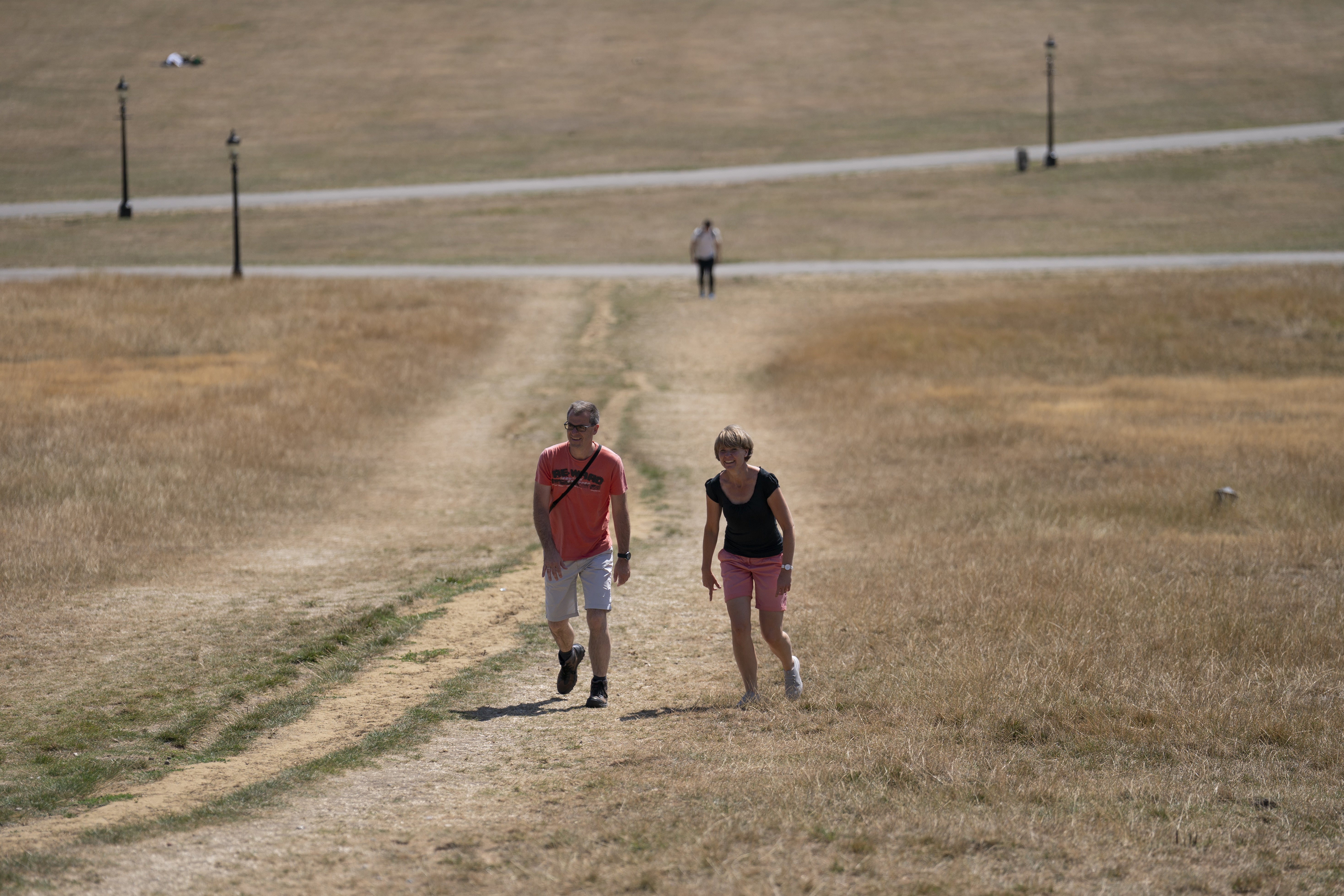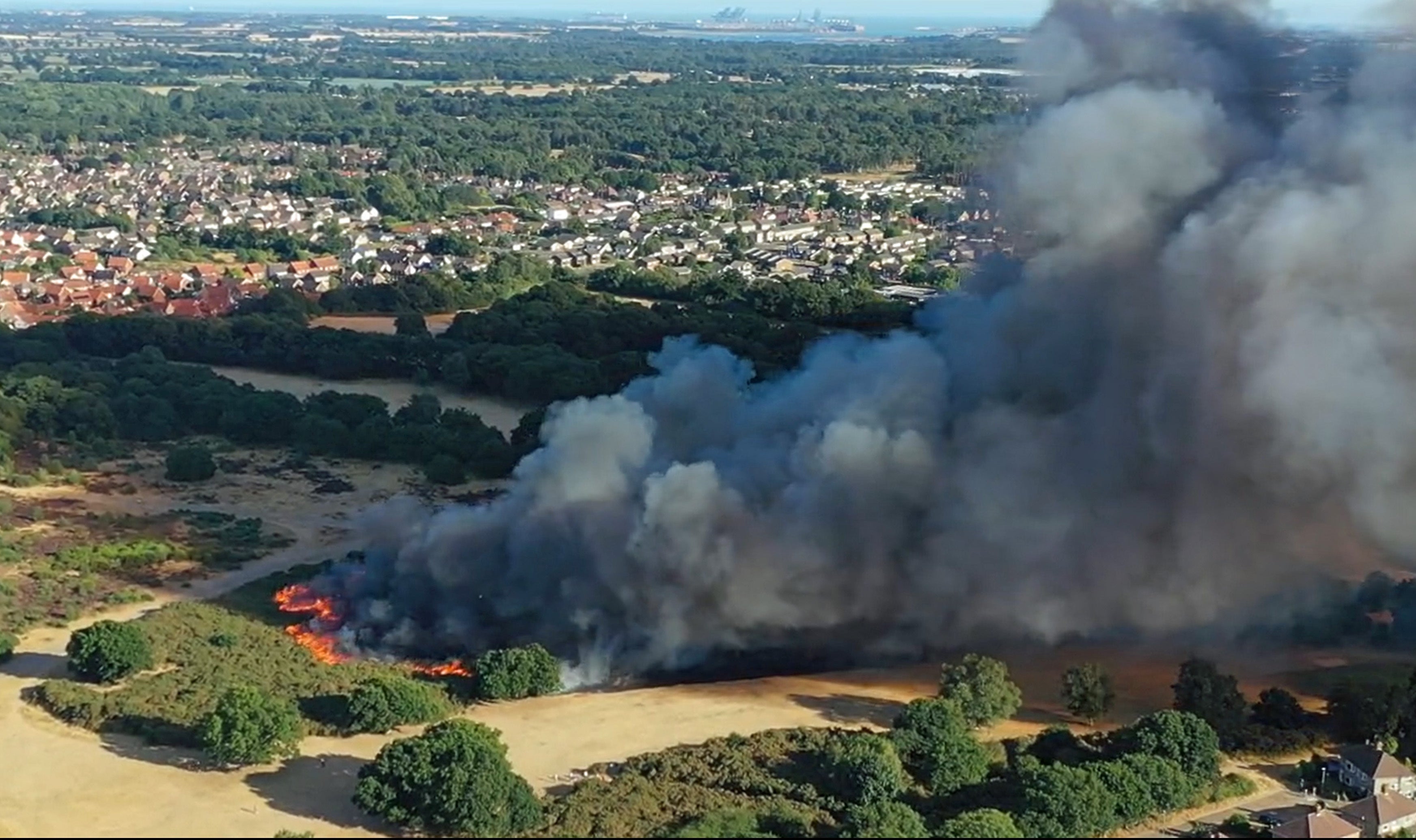UK weather: Temperatures to hit 30C ahead of amber warning for extreme heat
Thursday to Sunday set to be extremely warm for large parts of England and Wales
Your support helps us to tell the story
From reproductive rights to climate change to Big Tech, The Independent is on the ground when the story is developing. Whether it's investigating the financials of Elon Musk's pro-Trump PAC or producing our latest documentary, 'The A Word', which shines a light on the American women fighting for reproductive rights, we know how important it is to parse out the facts from the messaging.
At such a critical moment in US history, we need reporters on the ground. Your donation allows us to keep sending journalists to speak to both sides of the story.
The Independent is trusted by Americans across the entire political spectrum. And unlike many other quality news outlets, we choose not to lock Americans out of our reporting and analysis with paywalls. We believe quality journalism should be available to everyone, paid for by those who can afford it.
Your support makes all the difference.The UK is set for a warm and dry day before another heatwave brings potentially dangerous conditions across much of the country for the rest of the week.
Temperatures are forecast to top 30C in parts of the West Midlands and the West Country on Wednesday, pushing up into the high 20s for much of the rest of England and Wales and the mid-20s in lower parts of Scotland.
Health authorities have warned that Thursday will see temperatures rising further, putting vulnerable people at risk in large parts of the country.
The Met Office has issued a four-day amber warning for extreme heat covering the bulk of England below the M62 in Yorkshire and eastern and central parts of Wales until Sunday.
Temperatures are set to climb to 35C or even 36C in some places and the UK Health Security Agency (UKHSA) has extended its Level 3 heat health warning until Sunday night.
The UKHSA said vulnerable are likely to experience adverse health effects and the wider population could also be affected, delays to travel are possible and there is an increased risk of water accidents and fires as more people head to tourist spots.
The Met Office’s fire severity index, an assessment of how severe a fire could become if one were to start, is very high for most of England and Wales and will reach “exceptional” for a swathe of England by the weekend. Two large fires were sparked amid dry conditions in southern England on Tuesday.

Water companies continued to take precautions against shortages after the driest first half of the year since 1976 saw southeast England clocking up 144 days with little or no rain so far in 2022.
Thames Water, which serves 15 million people in southern England has signalled it will introduce a hosepipe ban in the coming weeks.
The water company said: “Given the long-term forecast of dry weather and another forecast of very hot temperatures coming this week, we are planning to announce a temporary use ban in the coming weeks.”
It urged customers to only use what they need for their essential use.

Southern Water, serving Hampshire, has already enacted a hosepipe ban, while South East Water will bring one in from Friday.
Welsh Water will enforce a hosepipe ban in parts of Pembrokeshire and Carmarthenshire from next Friday.
The Met Office said several inches of rainfall above average is needed to overcome the dry conditions in parts of southern England.
Dan Rudman, deputy chief meteorologist at the Met Office, said: “With high pressure dominant this week, any showers this week will be contained to the far northwest, and even here they will be short-lived in nature.

“Further south, which has seen little rain for some time now, it will continue dry through the week providing no relief for parched land, especially in the southeast.”
This week’s temperatures are not set to be as extreme as the record-breaking heights of July, when 40C heat was recorded in the UK for the first time. But the sustained period of hot weather is expected to register as Britain’s second heatwave in a matter of weeks.
Climate change is making heatwaves more intense, frequent and likely, with research showing last month’s record temperatures were made at least 10 times more likely by global warming but “virtually impossible” without it.
Scientists also warn the likelihood of droughts occurring is becoming higher due to climate change, driven by greenhouse gas emissions from burning fossil fuels and other human activities.

Join our commenting forum
Join thought-provoking conversations, follow other Independent readers and see their replies
Comments